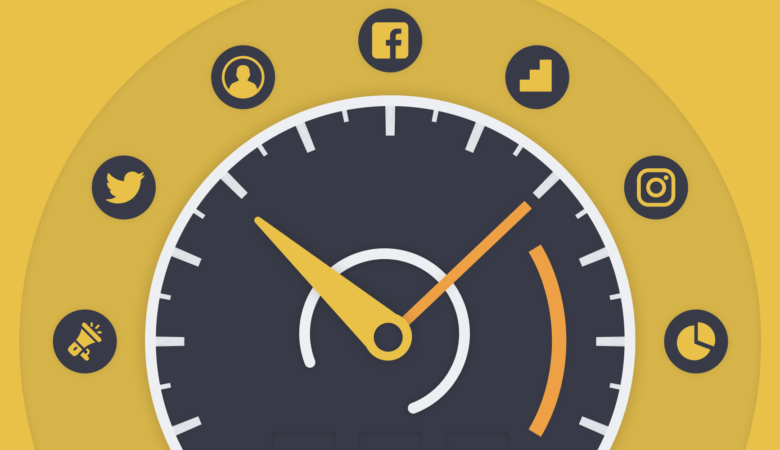Despite the ongoing pandemic, 2020 was still a record year for venture capital investments into American startups, which amounted to $156.2 billion, according to a recent PitchBook report.
Being an astute entrepreneur, you’ve likely thought of everything to enable your startup business to hit the ground running — branding, product logos, hiring staff, equipment purchases, and structuring your business roadmap. You are ready to take the marketplace by storm — or so you think.
Because you are now competing in the always-online global market, website uptime is vital to your success and downtime may cost tens of thousands of dollars, or more, in terms of lost revenue. This is especially true if you are running an e-commerce business involving transactions.
That’s where website performance monitoring tools enter the picture as an integral component of modern business models. They are even more important to startups in the process of creating brand awareness and building a solid customer base because any delays navigating or purchasing items on your website, will likely cause fickle consumers to look elsewhere.
It’s mission critical that you engage a good website monitoring solution to keep an eye on your website’s uptime and performance. Here’s why.
Frequent downtime hurts your brand image
Many startups either don’t budget for website monitoring or don’t think they need it but if the U.S. Bureau of Labor Statistics numbers are accurate, about 20% of small businesses fail in their first year. By the second year, that number goes up to 30%.
Most of that is due to running out of cash. But problems maintaining reliable network uptime only compound the problem and add more risk into the equation. Beating those odds requires a holistic business plan that incorporates good marketing practices along with keeping a keen eye on uptime performance, accuracy of your websites, APIs, web applications, and servers.
If you are running an online store to generate most of your revenue, frequent downtime and slow page load times will most certainly annoy your customers and jeopardize your brand image right from the start. The best way to protect your brand image and build your marketplace reputation is through constant website monitoring.
You stand to lose revenue, lots of it if you don’t monitor
There are lots of studies pointing out that downtime can cost wads of cash depending on how long it persists and the size of the organization.
Financial loses range from $137 to $427 per minute for small business to nearly $9,000 for large enterprises, according to the most recent data available from Ponemon Institute.
You may be thinking that your startup is too well managed to incur damaging revenue losses simply due to website downtime but is it really worth risking it? What happens if your customers start abandoning carts, or your login page, or new account signup suddenly stops working? How long would it take for you to notice before you experience substantial financial or reputational damages?
One advantage of using a website monitoring service is that you can customize web application monitoring. The monitoring service builds a script based on how you want customers to interact with your website, such as going from browsing your products all the way to cart checkout.
The monitoring service uses a script to conduct regularly scheduled tests to ensure that the functionality and performance of the site meets expectations. If not, the monitoring service sends an alert to your support team so they can act quickly and resolve the problem before it affects customers and your bottom line.
Critical monitoring checks work
Fortunately, it’s easy to set up monitoring checks to ensure that your site, blog, or online store is set up properly and running at full potential. There are several monitor types that you can custom configure based on your particular business requirements.
- Availability Monitoring – Prevents adverse situations by checking the uptime of infrastructure components, such as servers and apps, and notifying IT managers of problems before they impact business.
- Website Performance Monitoring – Provides detailed performance data about your page by running checks in real browsers from multiple locations simultaneously. Pages are loaded with all the elements exactly as your users see them. Waterfall reports identify elements causing slowdowns and alerts can be setup the moment your website load-time limits are reached or exceeded.
- Web Application Monitoring (& Transactions) – Verify if web applications work as expected by setting up step-by-step workflows in a browser that can be recorded and tested at hundreds of worldwide network checkpoints. This type of testing is essential to see if logins, logoffs, and password reset requests work properly. Retail, hospitality booking systems, and SaaS applications benefit tremendously from transaction monitoring. You can also record scripts testing e-commerce checkout flows, such as adding items to carts, performing payments, etc.
- API Monitoring – Multi-step API monitoring checks your APIs for performance, uptime, and functionality by testing multiple HTTP requests for redirects, authentication, and other API interaction. APIs can also be monitored from hundreds of global checkpoints.
- Real User Monitoring (RUM) – Real User Monitoring works exactly as its name implies — it gets you data from actual user activity in real time. You can compare website performance by country or region and know exactly where load times can be improved. You can also compare the performance of visited pages and spot trends in charts so you can see load times during peak business hours.
Hackers are lurking everywhere these days
If you pay attention to news reports, chances are that you’ve heard about yet another high-profile hack on a government or commercial network. Hackers are seemingly ubiquitous like raindrops in a storm cloud, and they are increasingly targeting startups and other low-hanging cyber fruit to boost their incomes.
And while it may be true that your business may not be directly on their radar, you could experience site problems downstream as a result of their activities and due to a malicious code spreading into your network. Verizon’s 2021 Data Breach Investigations Report indicated that nearly 50% of cyberattacks affect small and midsize business (SMBs).
Web log management and monitoring tools could alert you quickly as to such issues quickly so you can act quickly and mitigate damage.
Your google search engine ranking could take a hit
Simply put, Google does not play well when it comes to downtime issues. In fact, if your business site is constantly down for one or more days, there’s a good chance that it will take a huge hit in terms of ranking in search results.
Google uses a number of different factors to rank your website for things such as SERP (Search Engine Results Page), which is affected by downtime and the speed of your website. Once again, maintaining a high percentage of uptime could ensure that your website is more Google-friendly and boost your bottom line.
Takeaway
Running a successful startup in today’s highly competitive business environment requires operating a 24/7, high-availability network to deliver goods and services to your customers reliably. The new norm for businesses of all sizes means that your customers may insist on a network uptime of 99.999%, typically referred to as five-nines network availability.
One essential component of reaching that goal is going to be with the implementation of a robust website monitoring solution. You can test drive one with little or no initial investment. The alternative to cutting corners may result in damage to your brand reputation or significant loss of revenue.




